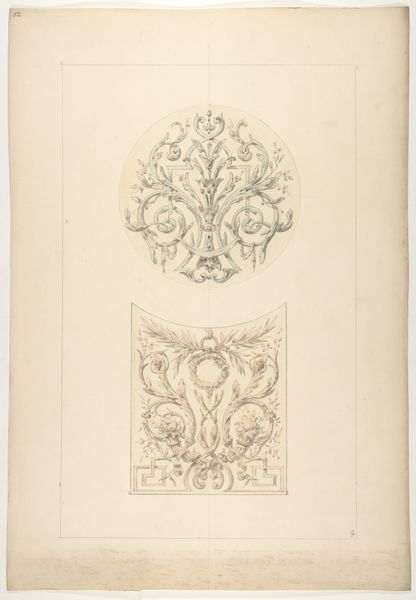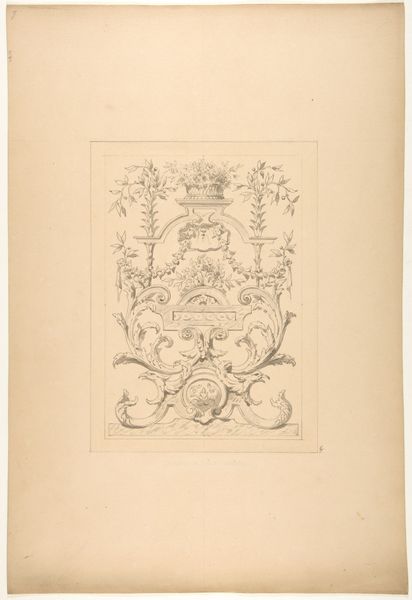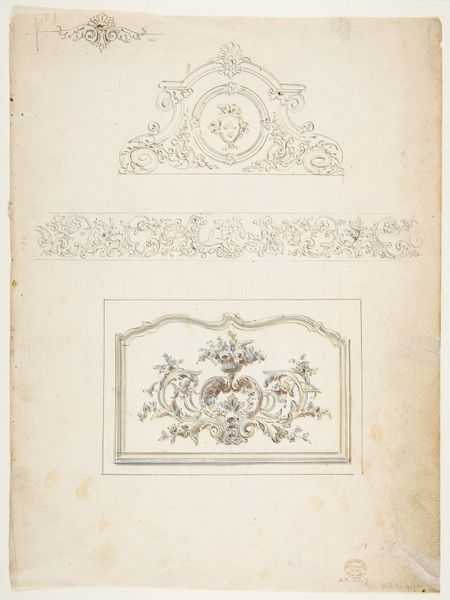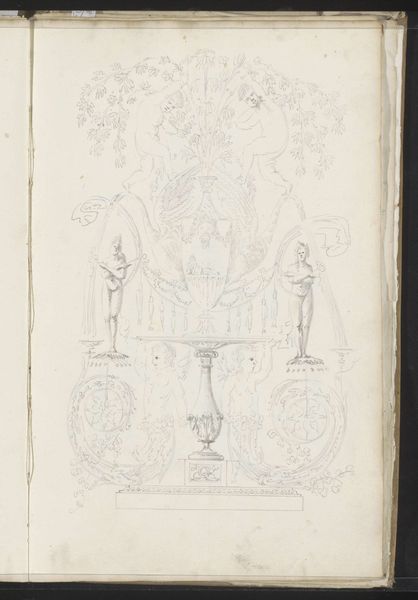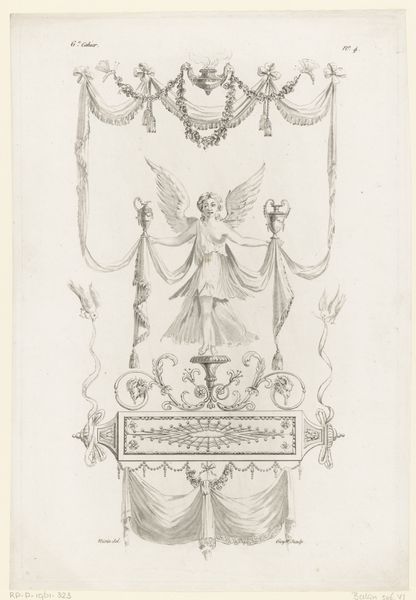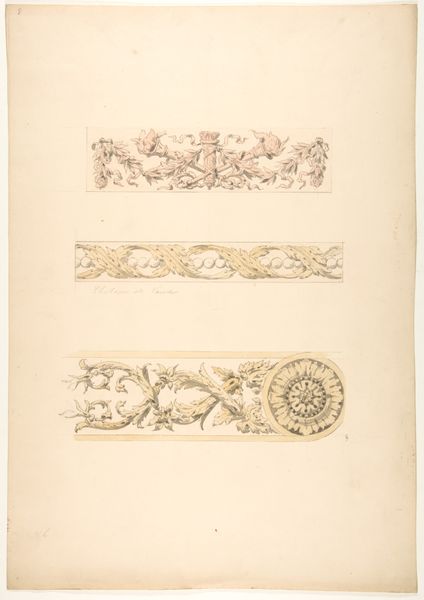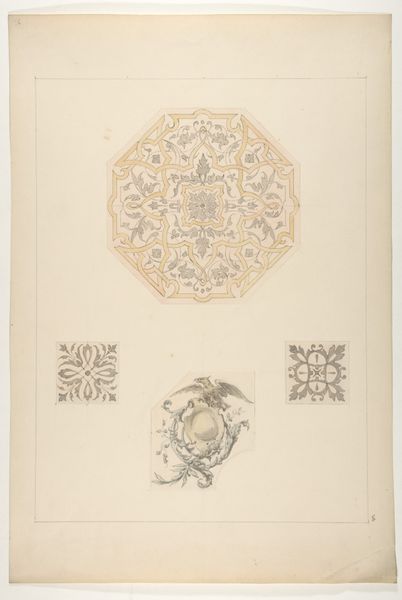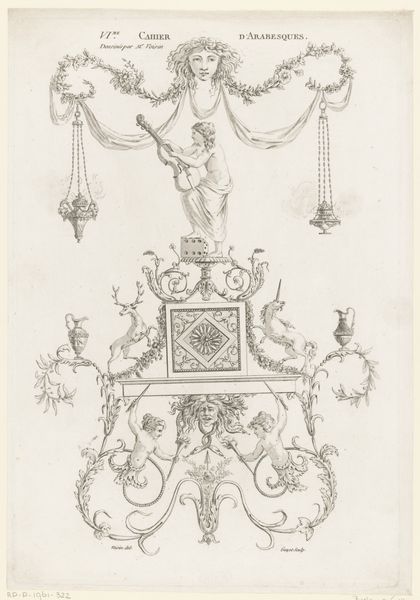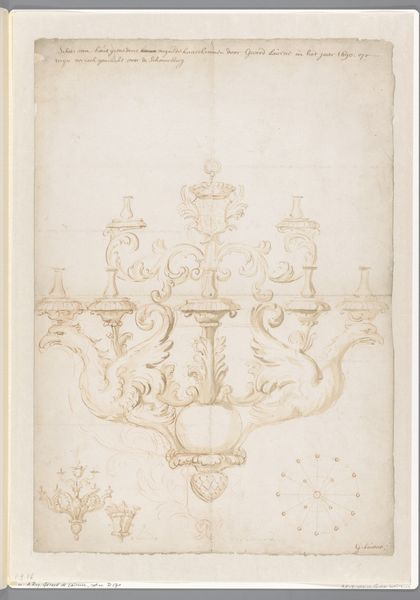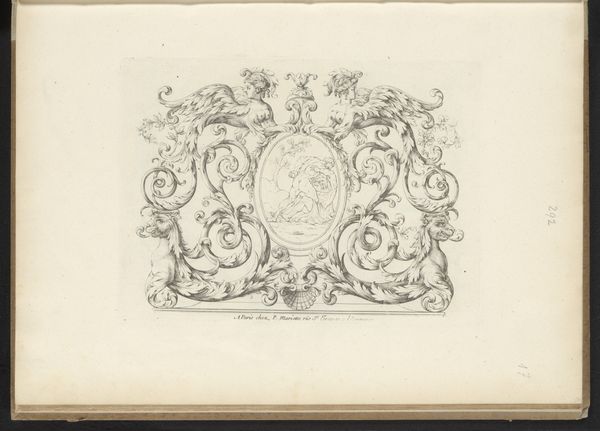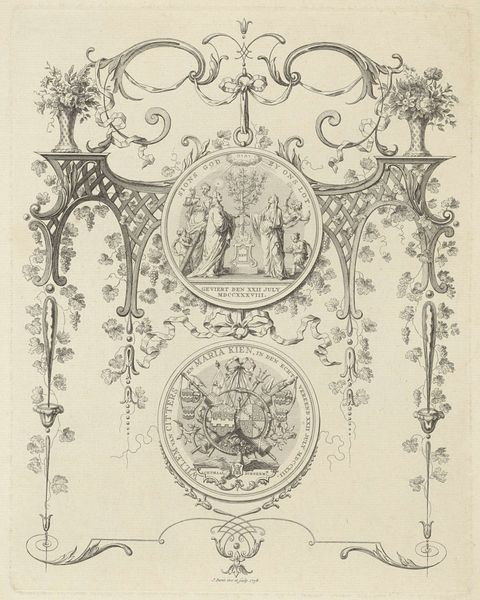
Two designs for decorative panels and one design for an ornamental monogram with a crown and the initials: FF 1830 - 1897
0:00
0:00
drawing, graphic-art, ornament, print, etching
#
drawing
#
graphic-art
#
ornament
# print
#
etching
#
etching
#
geometric
#
line
#
decorative-art
Dimensions: sheet: 19 1/2 x 13 3/8 in. (49.5 x 33.9 cm)
Copyright: Public Domain
Editor: This etching by Jules-Edmond-Charles Lachaise, titled "Two designs for decorative panels and one design for an ornamental monogram with a crown and the initials: FF," dating from between 1830 and 1897, has a very formal, almost stately feel. The line work is incredibly precise. What historical contexts might have shaped the creation and use of these designs? Curator: These kinds of ornamental designs speak volumes about the cultural values placed on craftsmanship and aristocracy at the time. Etchings like these were often produced not as stand-alone art pieces but as source material for artisans. Think about the rising middle class and their desire to emulate aristocratic taste; printed designs made aspects of that world accessible. Who do you imagine the target audience might have been, and how would they have engaged with this print? Editor: Perhaps interior decorators or furniture makers wanting to offer their clients that upper-class aesthetic? Curator: Precisely! These weren't just aesthetic choices, but statements of social aspiration. And notice the recurring motifs: the crown, the stylized "FF." How do these symbols contribute to the piece's meaning? Editor: Well, the "FF" monogram alongside the crown suggests royalty or nobility. The whole sheet feels designed to convey status. Was there a thriving market for designs incorporating these motifs? Curator: Absolutely. The market for luxury goods and services was expanding, fueled by industrial advancements and colonialism. These designs were tools to create environments that signaled power and prestige. Reflect on the ways in which this seemingly simple print reveals a complex interplay of social ambition, economic forces, and artistic production. Editor: It's fascinating how a design sheet can tell us so much about the era’s aspirations. I’ll definitely think about that “politics of imagery” when looking at decorative arts. Curator: Indeed, considering the power dynamics embedded in design choices offers a richer, more nuanced understanding of visual culture. I'll certainly ponder over it myself from now on.
Comments
No comments
Be the first to comment and join the conversation on the ultimate creative platform.
